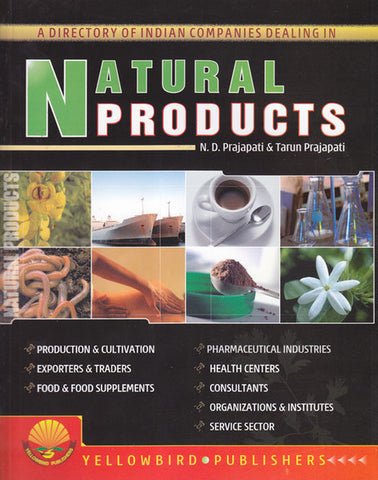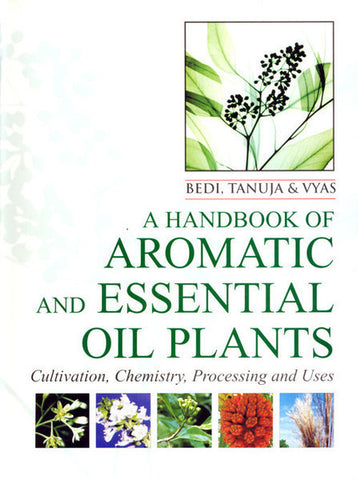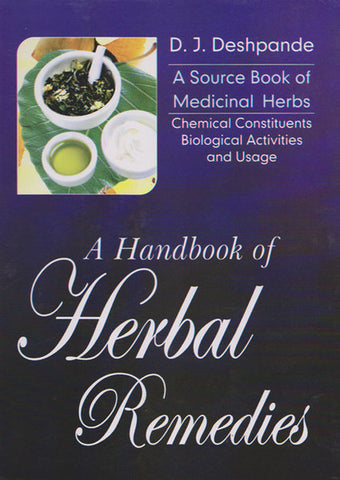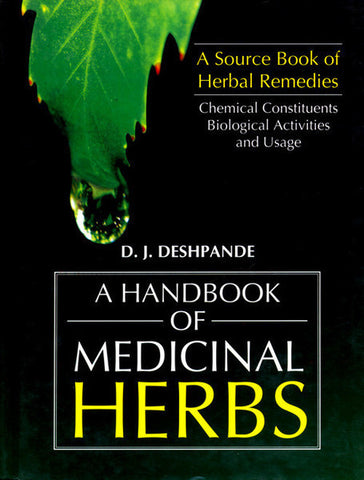AUTHOR: Dharm Singh
ISBN: 9788177543308
YEAR: 2009
PAGES: 230
BINDING: Hard
LANGUAGE: English
Aonla (Emblica officinalis) is widely used in Indian system of medicine as an ingredient in more than 175 ayurvedic formulations. It contains a number of biologically active phyto-nutrients including bioflavonoides, creonodies, polyphenols and flavones, all of which have extraordinary longevity and rejuvenating properties.
Aonla is not only a source of nutrient and medicine but its cultivation is also highly remunerated for the farmers. Traditionally, aonla has been a crop of forest or household, but during the last decade, there has been unprecedented expansion in the area under aonla cultivation across the country, utilizing the wasteland.
For ideal production of Aonla and its sustainable development in India, it is very important to provide scientific proven technology of Aonla cultivation, processing and post-harvest handling to farmers, traders and exporters and create mass awareness in potential areas at National level. Although, more literature on Aonla are available in our country, but authentic, practical & precise information are still lacking. This manuscript is intended to provide practical information on various aspects in precised and digestible form. Various key issues have been discussed to make it very useful to every farmer, trader, exporter, consumer, student, scientist, planner and policy maker.
Dharm Singh born in 1956 in Agra (U.P.). Did B. Sc. Ag. (Hons.) in 1978 & M. Sc. Ag. in 1980, both with first division and Doctorate in 1993 from Agra University. He started his professional career in 1981 and holds various responsible positions in Govt. & Non-Govt. organizations. Presently, he is working as Managing Director in Indian Medicinal Plants Marketing Federation. He has an excellent experience of research, teaching, extension education and administration at senior level with expertise in frontier areas of agriculture especially in Watershed Management, Transfer of Agricultural Technology, Beekeeping, Cultivation of Medicinal Crops, Vermi-Composting / Vermi-Culture and Seed Production / Certification. For outstanding contribution in these frontier areas, he was honoured by S.D. National Integration Award in 1992, National Vanaushadhi Award in 2001, National Honey Productivity Award in 2003 and received 22 appreciation letters from scientists, officers, press, administrators & policy makers of national repute.
During his professional career, he has published more than 186 research articles to scientific magazines, 190 to different National / Regional dailies. He has published 5 books, 47 booklets, 38 leaflets / folders, 18 extension bulletins, 32, evaluation / project reports and written 18 book chapters.
He became a member of American Society of Agronomy (USA) in 1990, International Horticulture Society (Holland) in 1993, Royal Horticulture Society (London) in 1994, International Bee-Research Association (UK) in 1998, National Honey Board (USA) in 1999, China Council for Promotion of International Trade (Beijing) in 2000, National Honey Marketing Board (New Delhi) in 2001 and Animal Welfare Board of India in 2003.
He has participated in a number of National & International seminars, symposia and workshops. He is, presently, an advisor of 18 NGOs of National repute and different committees.
1. PRESENT STATUS AND FUTURE PROSPECTS OF MEDICINAL PLANTS
a) History of Herbs
b) Need of Conservation and Cultivation of Medicinal Plants
c) Utilitisation Status of Medicinal Plants
d) Medicinal Plant Species in Present Trade
e) World-Wide Threatened Species of Medicinal and Aromatic Plants
f) Species of Medicinal and Aromatic Plants Under Cultivation
g) Market Needs - Wild or Cultivated
h) Advantages of Cultivated Medicinal Plants over Wild Harvest
i) Need of the People - Wild or Cultivated
i. Health Care Needs
ii. Income Generation
iii. Small-Scale Cultivation and Home Gardens
iv. Large-Scale Cultivation
j) Market Scenario of Medicinal Plants
i. Domestic Market Scenario
ii. Global Market Scenerio
iii. Export
k) Globalization of Ayurvedic and Medicinal Plant Sector
l) Status of Aonla in Ayurved
m) Future Prospects of Aonla Development
2. ORIGIN AND HISTORY
a) Origin
b) History
3. DISTRIBUTION AND PRODUCTION TREND
a) Distribution
b) Area and Production of Aonla in India
c) Production Trend
d) Perspective Areas for Aonla Plantation
4. BOTANICAL DESCRIPTION OF AONLA
a) Classification
b) Morphology
i. Tree
ii. Stem
iii. Branching
iv. Flowers
v. Inflorescence
vi. Fruit
vii. Leaves
viii. Seed
c) Reproductive Biology
i. Flowering
ii. Pollination
iii. Fruit Dormancy
d) Fruit Development Biology
i. Growth Pattern
ii. Changes in Metabolites
iii. Changes in Endogenous Hormones
1. Cytokinins
2. Gibberellins
3. Auxins
4. Inhibitors
e) Fruit Growth in Relation to Endogenous Growth Hormones
5. SPECIES AND VARITIES OF AONLA
a) Morphological Character of Phylanthus Indofischeri
b) Distribution of Phyllanthus Emblica and Phyllanthus Indofischeri
c) Varities
6. PHYTOCHEMISTRY AND PHARMACOLOGICAL PROPERTIES
a) Phytochemistry
b) Food Value
c) Pharmacological Properties
d) Ayuvedcu Resarch Finding
i. Hepatoprotective
ii. Hypolipidemic
iii. Anticlastogenic
iv. Antacid
v. Dyspepsia
vi. Anticancer
vii. Anti-Inflammatory
7. USES OF AONLA
a) Use of Fresh Aonla Fruit
b) Use of Dry Aonla Fruit
c) Use of Aonla Powder
d) Use of Aonla Oil
e) Use of Aonla Extract
f) Use of Bark
g) Use of Leaves
h) Use of Wood
i) Use of Root Bark
j) Use of Seeds
k) Use of Flowers
l) Natural Benefits and Curative Properties
i. Respiratory Disorders
ii. Diabetes
iii. Heart Disease
iv. Eye Disorders
v. Rheumatism
vi. Scurvy
vii. Prevents Aging
viii. Hair Growth and Pigmentation
ix. Liver Functions
m) Ethnobotanical Information on Aonla Uses
n) Ayurvedic Research Findings on Aonla Uses
i. Hepatoprotective
ii. Hypolipidemic
iii. Anticlastogenic
iv. Antacid
v. Dyspepsia
vi. Anticancer
vii. Kamasutra
viii. Anti-Cholesterol
8. VALUE ADDED PRODUCTS OF AONLA
a) Ayurvedic Products
i. Chavanprash
ii. Triflamashi
iii. Trifla Churn (Powder)
iv. Aonlaki Rasayan
v. Amalakyadi Churna
vi. Aamalaki Rasayanam
vii. Asokarista
viii. Avipatikara Churnam
ix. Chyavananaprasa Leham
x. Dasamularishta
xi. Dhatri Lauha
xii. Dhatryarista
xiii. Kumaryasava
xiv. Panchatika Guggulu Ghritam
xv. Thriphala Lepam
xvi. Thriphala Guggulu
xvii. Thriphala Ghritam
xviii. Thriphala Churnam
xix. Vatagajankusa Rasa
xx. Triphala
b) Classical Uses of Triphala
c) Classical Formulations
d) Cosmetic Produts
i. Aonla Hair Oil
ii. Hair Dyeing
e) Food Products
i. Herbal Tea
ii. Squash
iii. Aonla Squash
iv. Syrup
v. Jam
vi. Aonla Murabba (Preserve)
vii. Candy
viii. Aonla Candy
ix. Pickle
x. Sauce
xi. Supari (Dried Salted Segments)
xii. Aonla Churan (Spiced Salted Powder)
9. MAJOR PROBLEMS OF AONLA PRODUCTION IN SOUTH EAST ASIA
a) Lack of Standardization of Agro-Techniques
i. Planting
ii. Canopy Management
iii. Poor Fruiting
iv. Off-Season Flowering
v. Fruit Drop
vi. Flower and Young Fruit Drop
vii. Foliage Drop
viii. Fruit Abnormality
ix. Indigenous Technical Knowledge (ITK)
x. Farmers' Felt Research and Extension Needs
xi. Distress Marketing
10. RESEARCH AND DEVELOPMENT NEEDS
a) Research Needs
i. Genetic Improvement
ii. Assured Supply of Quality Planting Materials,
iii. Top Working and In Situ Establishment
iv. Nutrient Requirement
v. Optimization in Water Use
vi. Cropping Systems Studies
vii. Integrated Pest and Disease Management
viii. Post-Harvest Handling and Processing
b) Development Needs
i. Marketing Infrastructure
ii. Absence of Grower Cooperatives
iii. Lack of Information
iv. Post-Harvest, Processing, and Other Technologies
v. Marketing Extension
vi. Patents and Intellectual Property Rights
11. ECOLOGICAL REQUIREMENTS FOR AONLA DEVELOPMENT
a) Climatic Requirements
b) Soil Requirements
c) Water Requirements
12. PROPAGATION AND IN-SITU ORCHARD ESTABLISHMENT
a) Propagation through Seeds
b) Vegetative Propagation
i. Rootstock
ii. Seed Germination
iii. Grafting
iv. Stool Layering
v. Budding
vi. Standardization of Time and Technique of Budding
vii. Micro-Propagation
viii. In Situ Orchard Establishment
ix. Top Working
c) Top Working in Aonla
d) Technique
13. CULTIVATION PRACTICES
a) Preparation and Filling of Pits,
b) Planting
i. Time of Planting
ii. Method of Planting
c) Mulching
i. Benefits of Mulching
1. Precautions
2. Method of mulching
ii. Manure and Fertilizer Application
iii. Irrigation
1. Irrigation system
2. Micro-irrigation system
3. Drip system of irrigation in aonla
4. Micro-sprinkler and micro-sprayer
5. Pitcher irrigation
d) Intercropping
i. Vegetables as Intercrop
1. Winter
2. Summer
3. Aromatic and medicinal plants as intercrop
4. Cereals and legumes as intercrop
e) Harvesting
i. Harvest Indices
ii. Harvest Techniques
f) Yield
14. POST-HARVEST HANDLING, PROCESSING AND STORAGE
a) Post-Harvest Handling
b) Grading
c) Packaging
d) Processing
e) Processed Products of Aonla,
i. Pulp Extraction Technique
ii. Aonla Pulp
f) Storage
g) Storage at Ambient Temperature
i. Storage in Zero Energy Cool Chambers
ii. Storage at Low Temperature,
iii. Storage in Brine Solution
iv. Preservation in Steeping Solution
v. Storage by Application of Chemicals
1. Pre-harvest application
2. Post-harvest application
15. INSECT - PESTS AND THEIR CONTROL MEASURES
a) Aonla Aphids
b) Pomegranate Butterfly [Deudorix (virachola) Isocrates Fabr.]
c) Bark-Eating Caterpillar [Indarbela tetraonis Moore)
d) Mealy Bug (Nipaecoccus vestatar Newstead)
e) Leaf Rollers [ Garcillaria acidula and Tonica (Psorosticha) Ziziphy stainton]
f) Shoot Gall Maker [Betousa stylophora Swinhoe)
g) Fruit Midge (Clinodiplosis Sp.)
h) Stone Borer (Curculio Sp.)
16. DISEASES AND CONTROL MEASURES
a) Sooty Mould
b) Wilt
c) Lichen [Strigula elegans (Fee.) Mull. Arg.]
d) Anthracnose [Colletotrichum State of Glomerella cingulata (Stoenm.) Spauld and Schrenk.]
e) Rust [Ravenelia emblicae Styd.)
f) Soft Rot (Phomopsis phyllanthi Punith.)
g) Dry Fruit Rot (Phoma emblicae Jamaluddin Tandon and Tandon)
h) Blue Mould [Penicillium citrinum)
i) Fruit Rot [Phoma putaminum Speg.)
j) Dry Fruit Rot [Cladosporium tenuissimum Cooke, C. cladospori Oidies (Fries) De Vries.]
k) Fruit Rot [Nigrospora sphaerica (Sacc.) Massan]
l) Fruit Rot [Alternaria alternata (Fr.) Keissler]
m) Fruit Rot [Pestalotia cruenta Syd.)
n) Internal Necrosis
17. ORGANIC PRODUCTION OF AONLA
a) Introduction
b) Alternatives
c) Reasons for Production of Organic Aonla
d) Definition of Organic Farming
e) The Major Aims of Organic Farming
f) Components of Organic Farming
i. Green Manuring
ii. Animal Dung / Poultry Manure
iii. Compost
iv. Panchagavya
g) Bio-Fertilizers
i. Azotobacteria / Azospirillim Inoculants
ii. Phosphate Solubilizing Micro-Organisms
iii. Arbuscular Mycorrhizae (AM)
iv. Vermi-Compost
v. Biocontrol Agents
vi. Homa Farming (Agni Hotra Ash)
vii. Biodynamic Organic Farming
18. MARKETING AND EXPORT
a) Methods of Sale of Aonla
i. Contract Sale of Orchards
ii. Sale in Village
iii. Sale to Bulk Consumers
iv. Sale at Market Place
v. Marketing Charges
vi. Marketing Practices
b) Consumption of Aonla
i. Food Products
ii. Health Food
iii. Herbal Medicines
c) Exports
19. INDIAN MEDICINAL PLANTS MARKETING FEDERATION - ITS ROLE IN MARKETING AND DEVELOPMENT OF MEDICINAL PLANTS
a) Major Objective of Federation
i. Major Activities
1. Technology development and dissemination
2. Human resource development.
3. Commercial production
4. Quality control and organic certification
5. Export and market support
6. Other activities
b) Products Marketed by Federation
i. Marketing Network and Strategy
20. ROLE OF NABARD AND NMPB IN PROMOTION OF AONLA AND OTHER MEDICINAL PLANTS NABARD
a) Assistanc from Research and Development Fund
i. Development Role
ii. Recent Policy Initiatives
iii. Other Policy Initiatives
1. Nabard consultancy services (NABCONS)
2. Contract farming
3. Cofinancing
b) National Medicinal Plants Board
c) Schemes of Board
i. Promotional Schemes
ii. Commercial Schemes
iii. Contractual Farming
d) Preparation and Submission of Proposal
21. ANNEXURE
22. MODEL SCHEME FOR DEVELOPMENT OF AONLA
23. REFERENCES
24. SUBJECT INDEX


$50.00
AUTHOR: N. D. Prajapati & Tarun Prajapati YEAR: 2008 PAGES: 976 BINDING: Soft LANGUAGE: English...


$80.00
AUTHOR'S: Dr. Sheela Bedi, Dr. Tanuja & Dr. S. P. Vyas ISBN: 9788177543414 YEAR: 2008...


$75.00
AUTHOR: Dr. Dhananjay J. Deshpande ISBN: 9788177543421 YEAR: 2008 - First Published | 2001 -...


$60.00
AUTHOR: D. J. Deshpande ISBN: 9788177542981 YEAR: 2006 - First Edition | 2010 - Reprinted...